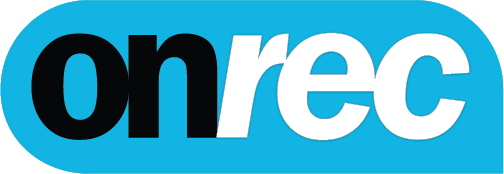In 2025, web applications remain to be the backbone of the digital transformation across various industries. From e-commerce platforms to SaaS solutions, businesses are spending a lot of money in web apps to improve customer delight and improve efficiency. But how much does it cost to develop a web application today?
The web app development cost varies depending on the type of app, its functionality, the development team, and the country. While some simple applications can be created within the price range of $30,000 to $80,000, large enterprise web apps, similar to Airbnb or Slack, may cost more than $500,000 to $1 million.
For instance, take the example of Airbnb. When it was launched for the first time, it was a simple web application that helped people who were traveling to find rental homes. In the process, the platform has integrated AI recommendations, secure payment, and real-time availability. If a startup were to build a similar custom web application development project from scratch today, the budget would easily start at $150,000 and go all the way up to $500,000, depending on complexity.
In the same manner, Slack, which started off as a internal communication tool, became a billion dollar SaaS platform. It’s early development costs were fairly small, but as the platform grew to include enterprise level security, integrations, and web automation features, the price of web application development skyrocketed.
If you are planning to create a web app then you should know the approximate costs of web application development. To ensure your new platform attracts traffic and ranks well from day one, consider partnering with an experienced SEO agency that can optimize your website for visibility and growth.
In this article, we will explore the key cost drivers, pricing models, regional variations and how to manage your spend.
The various factors that determine the cost of a web app development project
1. Scope and Complexity
The level of complexity of your app is the most important cost driver. Here’s a breakdown of typical pricing based on complexity:
|
Web App Type |
Features |
Estimated Cost |
|
Basic MVP |
Simple UI, login, basic features |
$30,000 – $80,000 |
|
Mid-range SaaS |
User dashboards, payment integration, APIs |
$80,000 – $200,000 |
|
Enterprise Web App |
AI, automation, custom security |
$200,000 – $1M+ |
For example, a task management tool that has basic functions such as creating to-do lists and logging in may cost between $50,000 and $100,000. However, an enterprise-level CRM such as Salesforce that comes with AI and third party integrations may cost more than $1 million.
2. Development Team Structure
Your decision to work with a development team has a big impact on the web app development cost:
-
Freelancers: Affordable but not good for long-term projects ($25 – $100/hour).
-
In-house team: The best option as it gives the company total control but at a cost of paying salaries of more than $80,000 per developer each year.
-
Outsourced team: It is affordable, can be scaled up, and gives you access to talent from all over the world ($40 – $150/hour).
For instance, a senior web developer in the U.S. is priced at $150 – $200 per hour, while the same expertise in Eastern Europe (Ukraine, Poland) is $40 – $80 per hour.
3. Technology Stack and Development Tools
Selecting the right tech stack also influence the cost of custom web application development.
|
Tech Stack |
Popular Choices |
Cost Considerations |
|
Frontend |
React, Angular, Vue.js |
Free, but skilled developers are expensive |
|
Backend |
Node.js, Python, Ruby on Rails |
Some require licensing fees |
|
Database |
PostgreSQL, MongoDB, MySQL |
Open source options are free and therefore reduce costs |
|
Cloud Hosting |
AWS, Azure, Google Cloud |
Pay as you go |
Using open source frameworks such as React and Node.js help in avoiding the costs that are associated with licensing. However, the use of paid services like AI powered APIs, cloud hosting, or third party analytics will incur more expenses.
4. Analysis of the Costs of Web Application Development Across Different Countries
One of the most determining factors of the cost of web application development is the location of the development team. Here’s a regional comparison of hourly rates:
|
Region |
Hourly Rate (USD) |
|
North America (US, Canada) |
$100 – $200 |
|
Western Europe (UK, Germany, France) |
$80 – $150 |
|
Eastern Europe (Ukraine, Poland) |
$40 – $80 |
|
South America (Brazil, Argentina) |
$30 – $70 |
|
Asia (India, Vietnam) |
$20 – $50 |
For example, a San Francisco startup could spend $300,000 – $500,000 on creating a full fledged SaaS app while outsourcing to Eastern Europe would cost $100,000 – $200,000 for the same scope.
5. Some Hidden Costs of Web Application Development
When determining how much it costs to develop a web application, businesses do not always take into account the hidden costs:
-
Project Management: It normally takes 10-15% of the total budget.
-
Cloud Hosting: AWS, Google Cloud or Azure can be expensive and can cost between $500 and $5,000 per month.
-
Third-party Services: Examples are Stripe and OpenAI which are APIs that incur monthly fees.
-
Security and Compliance: GDPR, HIPAA or SOC 2 compliance will cost between $10,000 and $50,000.
For example, Netflix spends more than $20 million a month on cloud hosting alone because it uses AWS. Of course, not many companies will need that much, but the cloud does not come cheap.
6. Pricing Models for Web Application Development
This article will help businesses control web app development cost efficiently by explaining different pricing models.
Fixed Price Model
Best for: For: Small projects with well understood requirements.
Pros: The cost is certain, the timeframes are known.
Cons: It is not very flexible; any changes will incur additional costs.
Example: A startup that is planning to develop a simple booking platform may decide to pay a $50,000 fixed price for a three month development cycle.
Time & Material Model
Best for: Medium to large projects with evolving needs.
Pros: Pay only for the work that is being done.
Cons: It is often hard to determine the final cost.
Example: A company developing a custom e-commerce platform can start with $100,000 and adjust the scope as they work on the iterations.
Dedicated Team Model
Best for: Long term development projects.
Pros: Get your own development team and it is cost effective to have them work continuously.
Cons: It involves the continued provision of resources.
Example: Large SaaS companies like Shopify or Zoom have dedicated offshore teams to constantly develop their platforms.
Similarly, businesses in the AliExpress Dropshipping space often rely on offshore teams for tasks like product sourcing, store management, and customer support to keep operations running efficiently and cost-effectively.
7. Case Study: An Approximate Cost of a SaaS Web Application
Let’s take an example of a SaaS project that is similar to Trello. The estimated costs would be:
Feature
Estimated Development Cost
User authentication, database setup
$10,000 – $20,000
Task management UI
$20,000 – $40,000
Team collaboration features
$30,000 – $60,000
Payment integration (Stripe, PayPal)
$10,000 – $30,000
Mobile-friendly responsive design
$20,000 – $40,000
Security measures & compliance
$15,000 – $50,000
Cloud hosting & scalability
$5,000 – $30,000/year
Total Cost Estimate
$100,000 – $300,000
Those companies which are planning to create a Trello-like SaaS product should be prepared to spend at least $100,000 – $200,000 depending on the complexity and development costs.
8. How to Optimize Web App Development Costs
If you want to reduce the cost of web application development, consider these strategies:
Start with an MVP (Minimum Viable Product)
Instead of building a complex product from the beginning, try to create the essential features and add the rest according to the users’ feedback.
For instance, when it launched, Instagram had no features other than sharing photos and later introduced features like stories, messaging and shopping.
Use Open-Source Technologies
Instead of proprietary software, you should use open source frameworks such as:
Use: React.js or Vue.js (frontend), Node.js or Django (backend), PostgreSQL or MongoDB (database).
Using open source tech can save between $10,000 and $50,000 in licensing fees.
Outsource to Cost-Effective Regions
Receiving services from developers in Eastern Europe or Latin America can be up to 40-60% cheaper without affecting the quality of work.
For instance, Slack also started by contracting a Canadian agency then built up its in-house team.
Automate Testing and DevOps
Using CI/CD pipelines and automated testing tools reduce long term maintenance costs.
For instance, Netflix deploys its builds on AWS and this saves them millions of dollars every year in infrastructure costs.
9. What to Expect in 2025
-
Rising AI and Automation Costs
More web apps will have AI based features like chatbots, predictive analysis and automation tools. However, this comes at a price ($50,000 or more) for the integration of AI.
-
Increased Demand for Scalability
This means that cloud native apps have to support increasing user numbers, which means that the cost of hosting will rise. The following will help manage scalability while keeping costs predictable: serverless architectures (AWS Lambda, Google Cloud Functions).
-
Security and Compliance Investments
Regulations like GDPR, HIPAA and SOC 2 will increase compliance costs for SaaS companies. Companies should set aside between $10,000 and $50,000 to meet security needs.
Final Thoughts: Planning Your Web App Budget
In 2025, the cost of custom web application development will depend on the scope, technology, and location.
Basic MVPs: $30,000 – $80,000
Mid-level SaaS platforms: $80,000 – $200,000
Enterprise solutions: $200,000 – $1 million+
To reduce costs, do the following: First, develop the minimum viable product (MVP), second, use open source tools, and third, consider nearshoring. By making these decisions in advance, businesses will be able to develop good web applications without spending more than they should.
Whether you are creating the next Airbnb, Trello or Slack it is essential to know these costs to make the right investment decisions.






